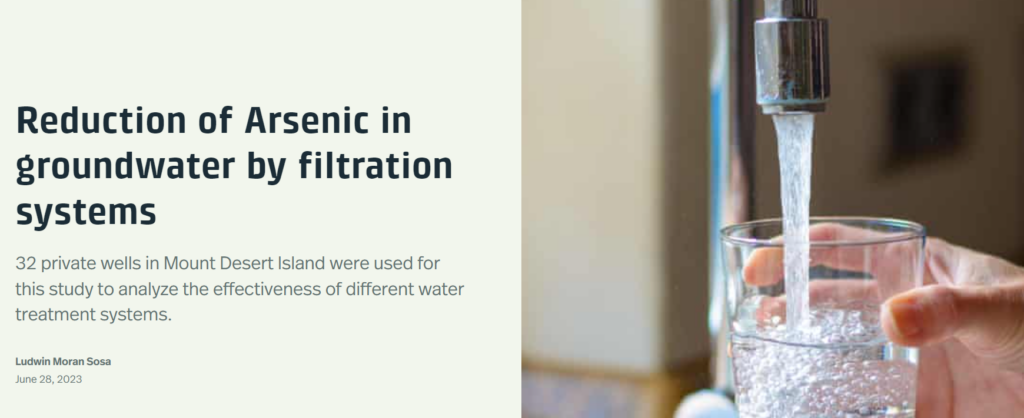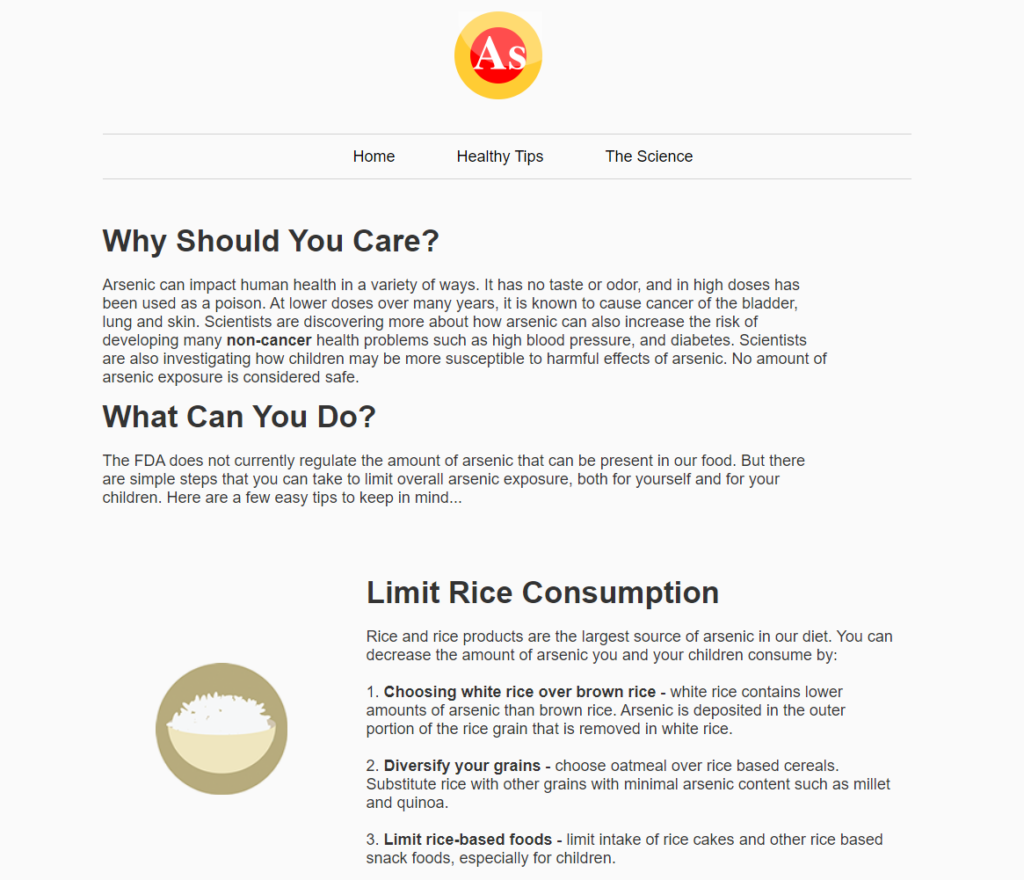Why arsenic is a problem
Chronic exposure to drinking water with elevated arsenic is associated with diabetes and an increased risk of cancers of the bladder, lungs, liver, and other organs.
A USGS model estimates that 2.1 million people throughout the U.S. may be drinking domestic well water high in arsenic – above the EPA Maximum Contaminant Level (MCL) of 10 µg/L. The Maximum Contaminant Level (MCL) for arsenic in New Hampshire is 5 µg/L – lower than the national MCL of 10 µg/L.
In states like Maine and New Hampshire, wells are usually drilled into hard crystalline bedrock, increasing the likelihood of high arsenic. Maine and New Hampshire also have among the highest per capita reliance on private wells for drinking water in the United States (ME: 56% and NH: 46%), yet testing rates are low.
1. Collection of StoryMaps on Drinking Water
We have multiple StoryMaps related to arsenic on the All About Arsenic website. Partners and students at the College of the Atlantic in Bar Harbor, Maine, worked on developing a suite of ESRI StoryMaps to explore various aspects of arsenic in New England. Visit this work to learn more about the Geologic History, Hydrology, Policy, and Arsenic Stories in the region through interactive maps and rich text, or explore the collection below.
View the Drinking Water StoryMaps here!
2. Focus on Filtration: Reduction of Arsenic in Groundwater by Filtration Systems
In a study of 32 private wells on Mount Desert Island in Maine, the effectiveness of different water treatment systems was evaluated. This Arsenic StoryMap explains the results and provides background information on the history of arsenic use and regulation in the United States.

3. Two Tuva Activities
There are two good Tuva activities to get students started thinking about their drinking water dataset. A premium subscription is needed to access these two activities.
Well, Should We Question the Water?
Can Arsenic Be Filtered Out?
4. Explore the arsenic data in our Tuva drinking water dataset.
All the drinking water data generated in the SEPA project can be found on our custom Tuva platform at arsenicdata.tuvalabs.com. There, students can analyze the data from all years or any school year. The graph below, made in Tuva, shows the number of water samples with arsenic levels between 5 and 10 µg/L. Why is this significant and worth considering? The Maximum Contaminant Level (MCL) for Arsenic in New Hampshire is 5 µg/L – lower than the national MCL of 10 µg/L, which Maine has adopted.
The blue dots on the right show water samples in New Hampshire that would not be classified as an exceedance under the national MCL of 10 µg/L, though they are an exceedance under New Hampshire’s standard of 5 µg/L. The green dots on the left show the water samples that are not considered exceedances under the national/Maine MCL of 10 µg/L, but would be if Maine lowers its standard to 5 µg/L as New Hampshire did in 2019.
New Hampshire lowered the standard based on research demonstrating health risks above 5 ppb of arsenic. The dot plot below shows how many households in Maine may be at risk for the health effects of arsenic exposure and how many households in New Hampshire are getting a different public health message!

5. Digital Interactive Notebook 1: Private Well Water
The Private Well Water Interactive Notebook has activities such as interacting with the periodic table, working with maps to consider the amount of As concentration in well water throughout the state, and connecting well water quality to health outcomes.

6. Digital Interactive Notebook 2: Arsenic and Public Policy
The Arsenic and Public Policy Digital Interactive Notebook features activities such as learning about the legislative process, considering public vs. domestic water supplies, and brainstorming ideas for citizen engagement.

7. Arsenic Teaching and Learning Tool
Dartmouth’s Geisel School of Medicine’s Children’s Environmental Health and Disease Research Center created a teaching and learning tool focused on arsenic, with helpful tips and information on health risks, including arsenic exposure through food consumption.
